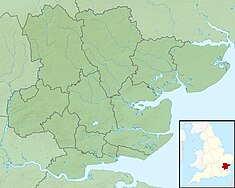
Woburn Abbey, occupying the east of the village of Woburn, Bedfordshire, England, is a country house, the family seat of the Duke of Bedford. Although it is still a family home to the current duke, it is open on specified days to visitors, along with the diverse estate surrounding it, including the historic landscape gardens and deer park, as well as more recently added attractions including Woburn Safari Park, a miniature railway and a garden/visitor centre. It was built by William Russell, 1st Baron Russell of Thornhaugh.
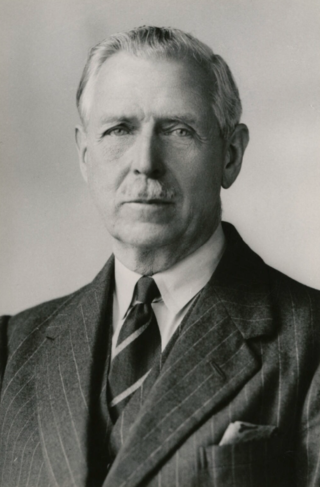
Gerald Wellesley, 7th Duke of Wellington,, styled Lord Gerald Wellesley between 1900 and 1943, was an Anglo-Irish diplomat, soldier, and architect.

Henry Paul Guinness Channon, Baron Kelvedon, was Conservative MP for Southend West for 38 years, from 1959 until 1997. He served in various ministerial offices, and was a Cabinet minister for 3½ years, as President of the Board of Trade and Secretary of State for Trade and Industry from January 1986 to June 1987, and then as Secretary of State for Transport to July 1989.
Sir Robert Vidal Rhodes James was a British historian and Conservative Member of Parliament. Born in India, he was educated in England and attended the University of Oxford. From 1955 to 1964, he was a clerk of the House of Commons. He meanwhile wrote a number of biographical and historical books. He then moved to academia and had been elected a Fellow of All Souls College, Oxford in 1965. He was Director of the Institute for the Study of International Organisation at the University of Sussex (1968–1973) and then Principal Officer in the Executive Office of the Secretary General of the United Nations (1973–1976). He moved from behind the scenes by being elected Member of Parliament (MP) for Cambridge in the 1976 by-election. He spent most of his parliamentary career on the backbenches, apart from serving as a Parliamentary Private Secretary at the Foreign Office (1979–1982). He was knighted in 1991 and stepped down as an MP the following year. During his time as an MP, he continued to author multiple books and maintained his academic standing through visiting professorships and his Oxford fellowship.
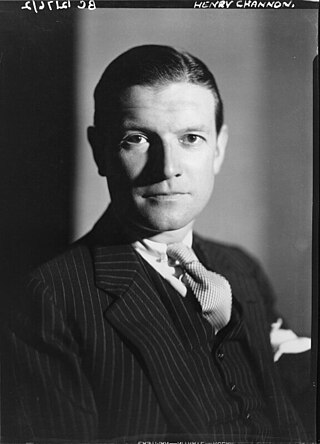
Sir Henry Channon, often known as Chips Channon, was an American-born British Conservative politician, author and diarist. Channon moved to England in 1920 and became strongly anti-American, feeling that American cultural and economic views threatened traditional European and British civilisation. He wrote extensively about these views. Channon quickly became enamoured of London society and became a social and political climber.
Robert Lugar, was a British architect and engineer in the Industrial Revolution.

Kelvedon Hatch is a village and civil parish in the Borough of Brentwood in south Essex, England. It is situated just north of Pilgrims Hatch, approximately 4 miles (6.4 km) to the north of Brentwood and is surrounded by Metropolitan Green Belt. In 2019 the built up area had an estimated population of 2,434. The parish had a population of 2,563 in 2001, reducing to 2,541 at the 2011 Census and climbed back up to 2,631 in 2021.
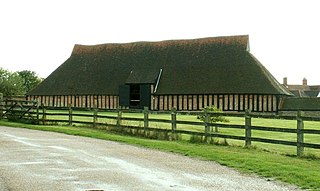
Cressing Temple is a medieval site situated between Witham and Braintree in Essex, close to the villages of Cressing and White Notley. It was amongst the very earliest and largest of the possessions of the Knights Templar in England, and is currently open to the public as a visitor attraction.
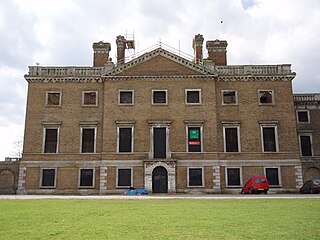
Copped Hall, also known as Copt Hall or Copthall, is a mid-18th-century English country house close to Waltham Abbey, Essex, which has been undergoing restoration since 1999. Today, Copped Hall refers to the upstanding house, while Copt Hall or Copthall refer to the older Tudor and earlier houses. Copped Hall is visible from the M25 motorway between junctions 26 and 27.
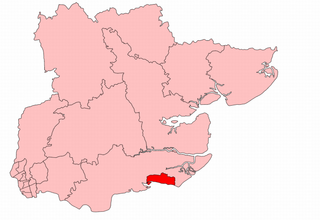
Southend-on-Sea was a parliamentary constituency centred on the then-town of Southend-on-Sea in Essex. It returned one Member of Parliament to the House of Commons of the Parliament of the United Kingdom.
The High Sheriff of Essex was an ancient sheriff title originating in the time of the Angles, not long after the invasion of the Kingdom of England, which was in existence for around a thousand years. On 1 April 1974, under the provisions of the Local Government Act 1972, the title of Sheriff of Essex was retitled High Sheriff of Essex. The high shrievalties are the oldest secular titles under the Crown in England and Wales, their purpose being to represent the monarch at a local level, historically in the shires.

Sir Gerard Augustus Lowther, 1st Baronet, was a British diplomat.

Rochford Hall is a manor in Rochford, Essex, England. During the reign of King Henry VIII, it belonged to Thomas Boleyn, who was then Viscount Rochford, and it was the marital home of his daughter Mary Boleyn, sister of Anne Boleyn, and Mary's second husband, Sir William Stafford. It is now privately owned by Rochford Hundred Golf Club where it acts as the clubhouse and is a Grade I listed building.

Little Henny is a hamlet and civil parish in the Braintree district in the county of Essex, England. It shares a parish council with Great Henny and Twinstead called "Hennys', Middleton & Twinstead". It is near the town of Sudbury in Suffolk. In 2001 the parish had a population of 48.
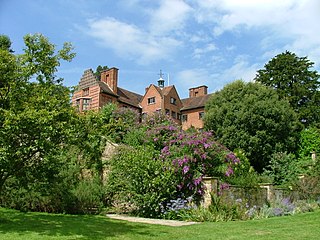
Philip Tilden was an English architect, active in the early twentieth century, who worked for some of the most prominent members of English society, including Winston Churchill, David Lloyd George, Lord Beaverbrook, Sir Philip Sassoon, Lady Ottoline Morrell and Gordon Selfridge.

Chigwell Hall is a Grade II listed house in Chigwell, Essex. It is situated on Roding Lane within 42 acres of grounds. It was designed by the English architect Richard Norman Shaw - his only house in Essex - for Shaw's client, Alfred Savill, founder of the Savills estate agency, and built in 1876. The building and grounds have been owned by the Metropolitan Police Service since 1967 and is the current site of the force's sports and social club.

Alvediston Manor, Alvediston, Wiltshire, England is an 18th-century house. From 1968 until his death in 1977, it was the home of the former prime minister Anthony Eden. The manor is a Grade II listed building.
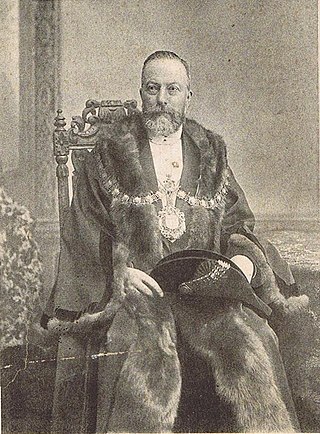
Frederic Chancellor, was an English architect and surveyor who spent much of his career working in Chelmsford, Essex, and its surrounding areas. His works included private houses, municipal buildings, churches, parsonages, banks and schools. It was during his later career that he concentrated on ecclesiastical buildings for which he became best known. A prolific architect, around 730 buildings have been attributed to him, 570 of which are in Essex.

Bradwell Lodge is a country house in the village of Bradwell-on-Sea, on the Dengie Peninsula in Essex, England. Originally a Tudor rectory, in the 18th century the house was purchased by the Reverend Sir Henry Bate Dudley. Bate Dudley engaged John Johnson, Surveyor of the County of Essex, to build a large Neoclassical extension. In the 20th century, the lodge was the home of Tom Driberg. Bradwell remains a private residence. It is a Grade II* listed building.
Henry Stock (1824/5–1909) was a British architect. He served as the county surveyor for Essex for nearly 50 years, and as the surveyor and architect to the Worshipful Company of Haberdashers. The latter appointment led Stock to undertake a considerable number of educational commissions, but his primary field of activity was in the construction of manufacturing sites and warehouses in London.

